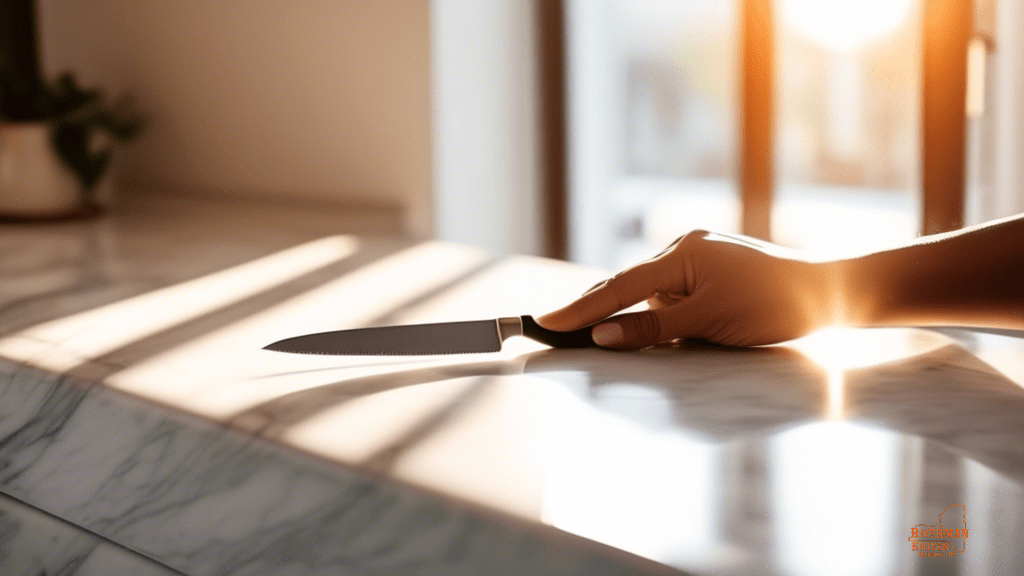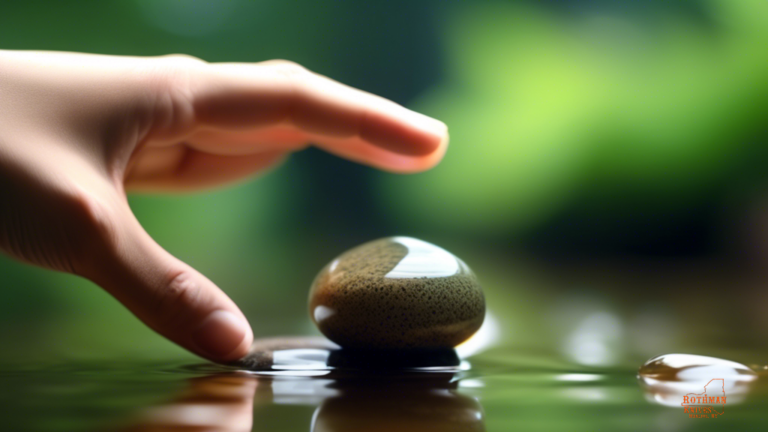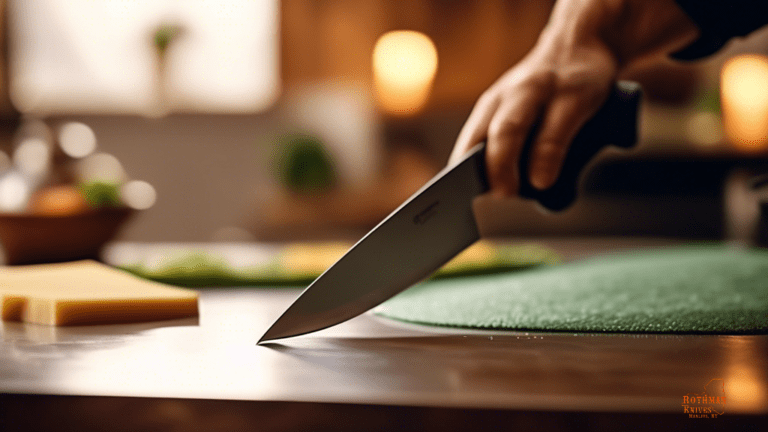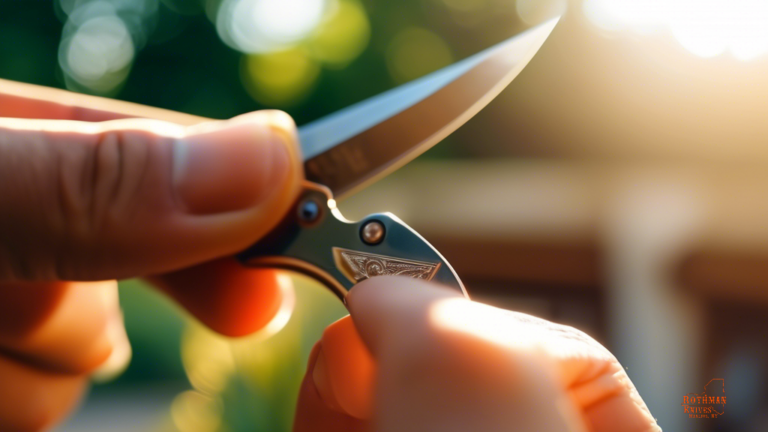Are you a beginner in the world of cooking or outdoor activities and looking to learn how to properly care for your knife handles? Maintaining your knife handles is essential for both safety and longevity.
In this beginner’s guide, you will find helpful tips on choosing the right handle material, regular cleaning and maintenance, avoiding excessive moisture, using protective sheaths, and repairing and replacing damaged handles. By following these simple yet effective tips, you can ensure that your knife handles stay in optimal condition for years to come.
Choosing the right handle material is the first step in maintaining your knife handles. Whether you prefer wood, plastic, or metal handles, each material requires specific care to prevent damage and ensure a comfortable grip.
Regular cleaning and maintenance, such as wiping down the handles after each use and oiling wooden handles periodically, will help prevent dirt and grime buildup. Remember, a well-maintained knife handle not only adds to the overall aesthetic appeal of your knife but also enhances your cooking or outdoor experience.
Key Takeaways
- Regular cleaning and maintenance is crucial to prevent dirt and grime buildup on knife handles.
- Choose durable handle materials such as wood, plastic, or metal to ensure longevity.
- Always dry knife handles thoroughly to prevent warping or rotting.
- Use protective coatings, oils, and sheaths to repel moisture, prevent scratches, and enhance overall knife experience.
Choosing the Right Handle Material
Now that you know how important it is to maintain your knife handles, you should choose the right handle material wisely.
Did you know that wooden handles are more prone to cracking and splitting compared to synthetic materials like G-10 or Micarta?
Choosing a handle material that is durable and resistant to wear and tear will ensure that your knife handles last longer and require less maintenance in the long run.
When selecting a handle material, consider your personal preferences and the tasks you will be using the knife for.
G-10 handles are lightweight and provide a secure grip, making them ideal for everyday use.
On the other hand, Micarta handles have a unique texture and are resistant to moisture, making them a great choice for outdoor activities.
By choosing the right handle material, you can not only enhance the performance of your knife but also feel a sense of belonging to a community of knife enthusiasts who appreciate quality craftsmanship.
Regular Cleaning and Maintenance
To keep your knife handles in top condition, it’s important to regularly clean and maintain them. After each use, take a moment to wipe down the handle with a damp cloth to remove any dirt, oils, or food residue that may have accumulated.
This simple step can help prevent buildup and keep your handle looking and feeling great.
In addition to regular wiping, consider deep cleaning your knife handles every few weeks. You can use a mild soap and warm water to gently scrub away any stubborn grime.
Just be sure to dry the handles thoroughly afterward to prevent any moisture damage.
By incorporating these simple cleaning habits into your routine, you’ll not only prolong the life of your knife handles but also ensure they remain a source of pride and joy in your kitchen.
Avoiding Excessive Moisture
To prevent your knife handle from warping or rotting, make sure to thoroughly dry it after washing and store it in a dry place.
Imagine the frustration of discovering your favorite knife handle has deteriorated due to excessive moisture – avoid this by taking proper care of it.
Remember, moisture is the enemy of your knife handle, so here are some tips to help you keep it in top condition:
- Always dry your knife handle immediately after cleaning to prevent water damage
- Store your knife in a cool, dry place away from any sources of moisture
- Consider using a protective coating or oil to seal the handle and repel moisture
By following these simple steps, you can ensure that your knife handle stays in great shape for years to come.
Taking care of your tools not only prolongs their life but also gives you a sense of pride in your belongings.
Using Protective Sheaths
Protect your knife handle by using protective sheaths whenever you store or transport it. These protective covers act as a shield against scratches, dings, and other damages that can occur during handling.
By keeping your knife in a sheath when not in use, you’re ensuring its longevity and preserving its aesthetic appeal.
Additionally, using protective sheaths can also prevent accidents and injuries. When your knife is safely covered, you reduce the risk of accidentally cutting yourself or others when reaching for it.
This extra layer of protection gives you peace of mind knowing that your knife is secure and ready for use whenever you need it. So, make it a habit to always sheath your knife after each use to keep it safe and in top condition.
Repairing and Replacing Damaged Handles
When repairing or replacing damaged handles, it’s important to consider the material and construction of the handle to ensure a proper fit and functionality.
If your knife handle is made of wood, you may need to sand down any rough edges or splinters before applying a coat of protective finish to restore its smoothness and appearance.
For handles made of synthetic materials like G-10 or Micarta, you can use adhesives to securely attach new handle scales if they have become loose or damaged.
Remember, the handle of a knife is not just for aesthetics but also for providing a comfortable and secure grip while using the blade.
If you notice any cracks, chips, or significant wear on your handle, it’s crucial to address the issue promptly to prevent further damage and ensure your safety.
Whether you choose to repair the handle yourself or seek professional help, taking care of your knife’s handle will not only maintain its longevity but also enhance your overall knife experience.
Frequently Asked Questions
Can knife handles be customized or personalized?
Absolutely! Knife handles can definitely be customized or personalized to fit your unique style and preferences. From different materials to intricate designs, there are endless possibilities to make your knife handle one-of-a-kind.
Are there any special considerations for maintaining handles on folding knives?
When it comes to maintaining handles on folding knives, remember to keep them clean and dry to prevent rust and corrosion. Regularly lubricate the pivot points to ensure smooth operation. Take care of your knife, friend.
How do you know when it’s time to replace a knife handle?
Wondering when to replace a knife handle? One interesting statistic: the average lifespan of a knife handle is 5-10 years. If yours shows signs of wear, like cracks or looseness, it’s time for a new one.
Are there any specific products or tools recommended for maintaining knife handles?
To maintain knife handles, consider using products like mineral oil or beeswax to condition and protect the wood. Tools like a soft cloth or brush can help clean and remove dirt buildup for a longer-lasting handle.
Can different handle materials affect the performance of a knife in any way?
Different handle materials can affect a knife’s performance. For example, wood provides a traditional feel and grip, while G-10 offers durability and a secure hold. Remember, as the saying goes, u0026quot;The handle is just as important as the blade.u0026quot;
Last Updated: July 15, 2024
Verified and Approved by:

Mike Rothman
Founder of Rothman Knives
Like This Article?
Share with your friends
Table of Contents
Latest Articles
Keep Reading
-
Unlocking The Power Of Japanese Water Stones
Unleash the power of Japanese water stones to achieve razor-sharp knives like never before! Learn how to elevate your sharpening game and unlock their full potential today. Click here to discover the secret behind Japanese Water Stones now!
-
Understanding Different Sharpening Angles
Unleash the secrets of sharpening angles to elevate your tool game! Learn how to find the ideal angle for perfect sharpness every time. Sharpen like a pro today and take your skills to the next level!
-
How To Choose The Perfect Folding Pocket Knife
Learn how to choose the perfect folding pocket knife with our ultimate guide! Whether you’re a seasoned outdoorsman or just need a reliable tool for everyday tasks, these tips for choosing a pocket knife will help you find the ideal blade for all your needs. Don’t miss out – start your search now!




